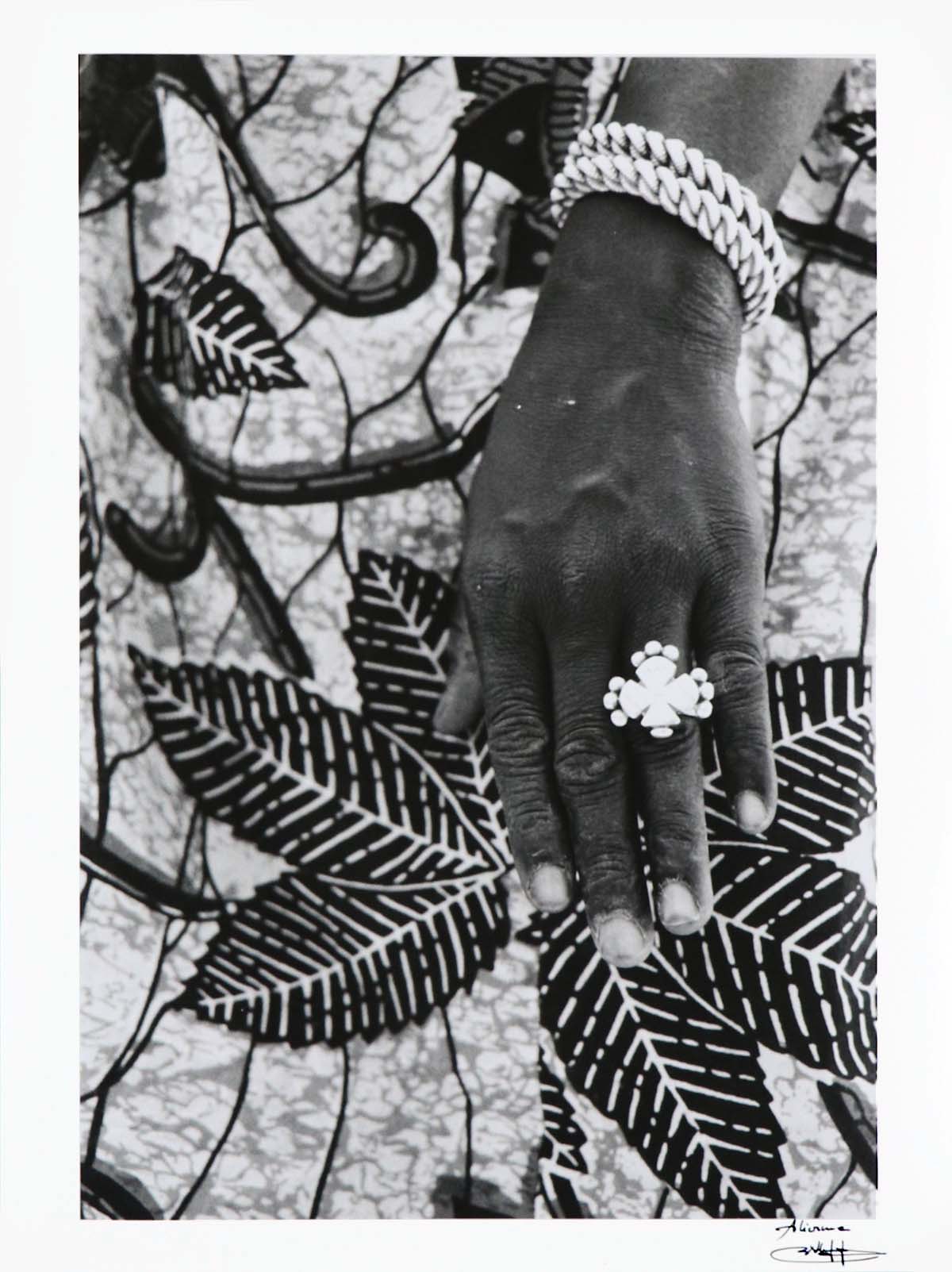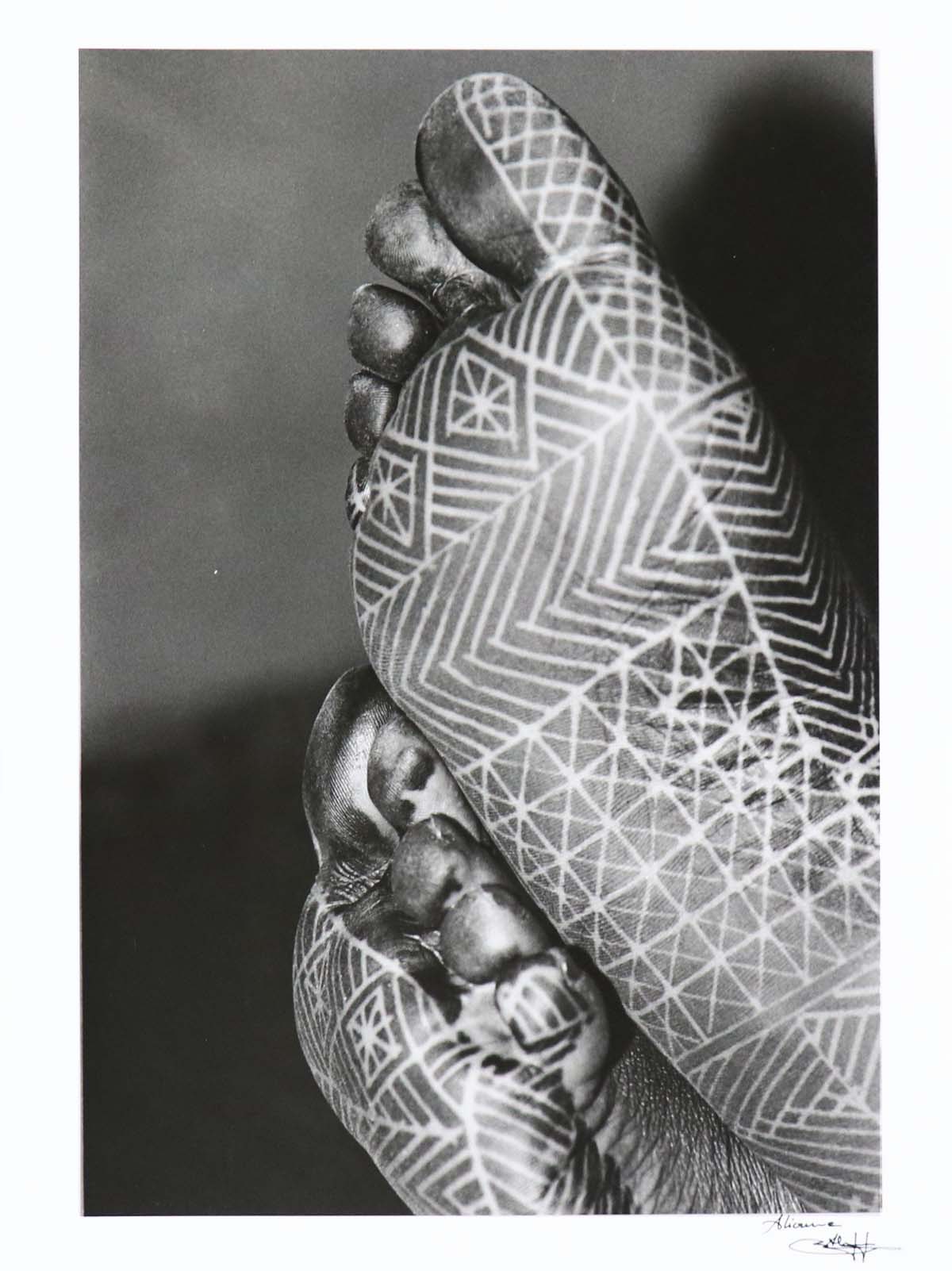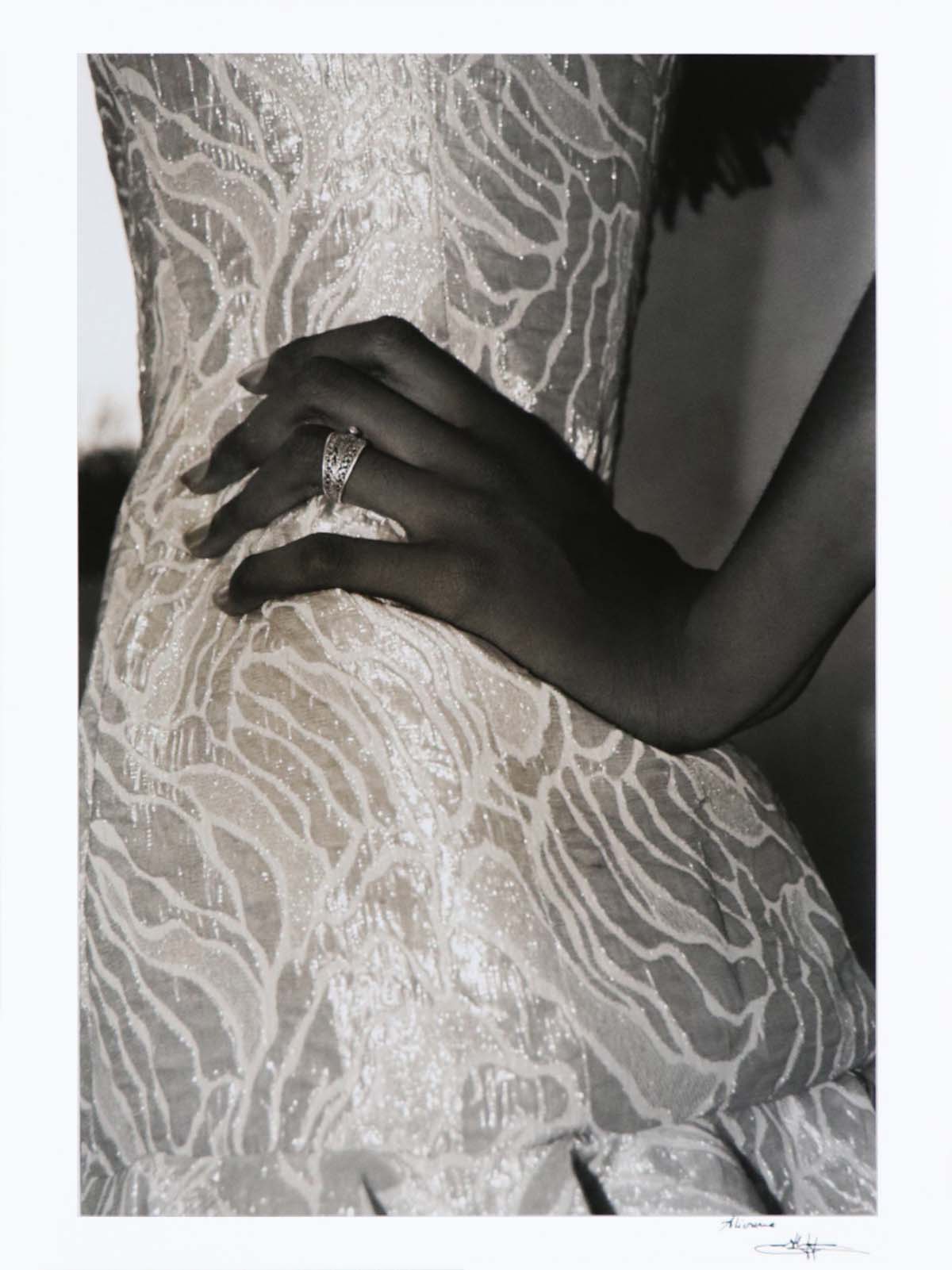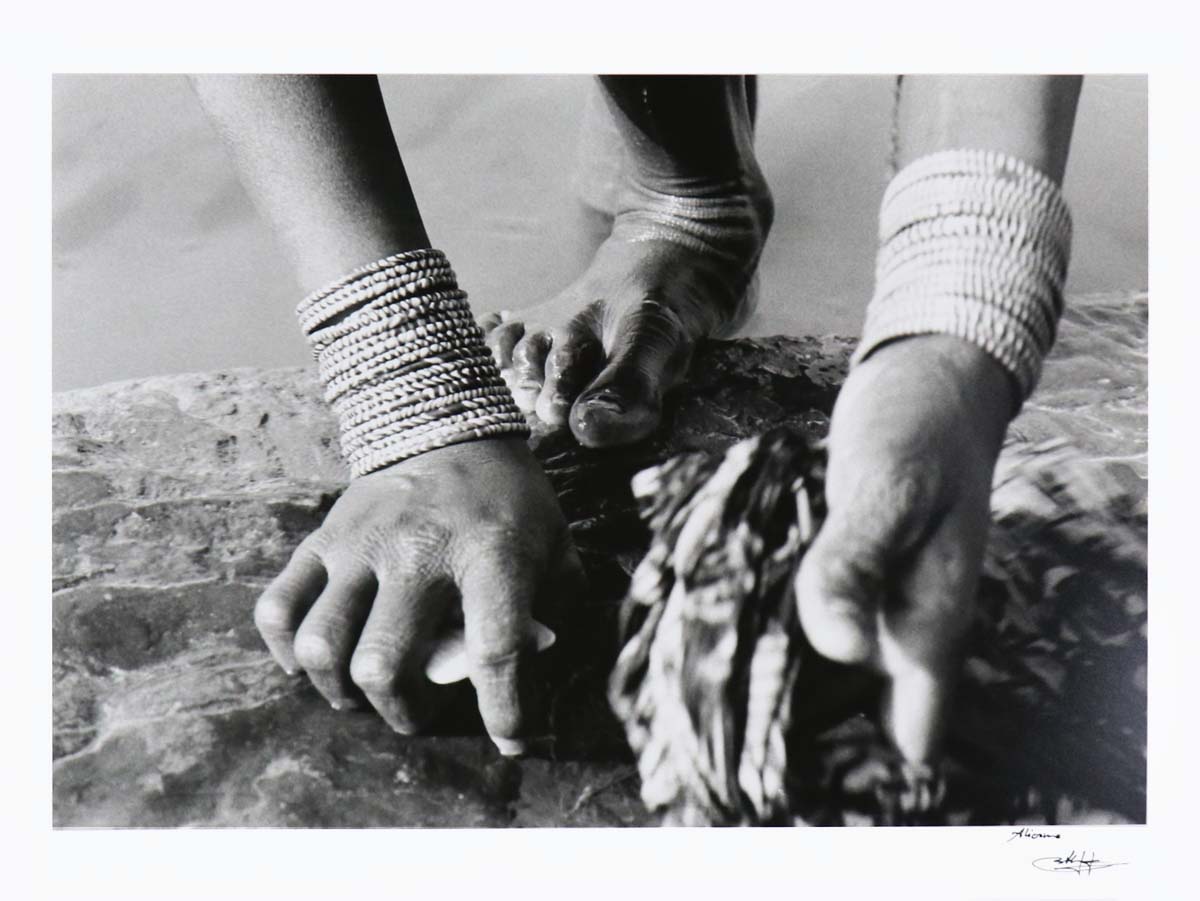Alioune Ba was born in 1959 in Bamako, the capital of Mali in the North-Western part of Africa. During his childhood the parents encouraged him to study hard and to finish both primary and secondary school and the importance of education is a topic that has stayed close to his heart ever since. In 1979 a series of student strikes and riots broke out and Ba had to leave his studies. He found work at Musée National du Mali which was a relatively newly opened institution after Mali gained independence from France in 1960. At the museum Ba noticed they were looking for photographers and decided to specialise in this field, quickly finding a passion and talent for the medium.
His initial job at the museum was to document Malian culture in various forms; from taking photographs and record artefacts, to chronicle ceremonial rituals such as the masquerades in and around the city of Segou. It was not a solitude desk job and during the late 80’ies, Ba was regularly asked by the employer to travel to other parts of Africa and to Europe, to learn from fellow museums on how to attest the culture of a country. It was during the early years at Musée National du Mali that Ba established what would become his unique practice as a photographer.

ALIOUNE BA
Bijoux d'argent (1997), 2001
Edition of 300
25(w) x 37(h) cm
9.84(w) x 14.57(h) inches

ALIOUNE BA
Bijoux d'argent (1997), 2001
Edition of 300
25(w) x 37(h) cm
9.84(w) x 14.57(h) inches
|
|
|
25(w) x 37(h) cm
9.84(w) x 14.57(h) inches
|
Silver print on resin paper.
Signed on front, numbered on verso.
Edition of 300
|
|
As Ba was taking his first steps as an artist in the late 80’ies, Bamako was already a capital buzzing with creative energy. To such an extent that Bamako was considered the “capital of photography” in Africa with local artists such as Seydou Keïta (1921 - 2001) and Malick Sidibé (1935 - 2016) finding international acknowledgement with Western museums and treated with solo shows at big galleries. But it took decades to emerge. Keïta opened his local studio, in what was then French colonial Mali, in 1948 and his work portraying a new Africa interwoven with Western culture found recognition: Two women in modern African fashion on a Vespa scooter; a man in traditional Malian clothes with a child on his knee - or a young woman in African dress displaying her Western designer handbag and shoes. With Mali’s newfound artistic success, the first Bamako Biennale of Photography opened its doors in 1994. Already a local artist,
Alioune Ba’s work was included at the Biennale alongside a new generation of talented Malian photographers.
Working primarily in monochrome, Ba’s photographic practice is different from his Malian contemporaries and often described as intimate and poetic. Through the work cataloguing for Musée National du Mali, he often had to focus on minute details to describe the importance of an artefact. This attention to the detail became essential to Ba’s oeuvre as he developed his practise. Ba realised that the traditional composition of showing people in full figure, distracted the viewer, who tended to focus on the face or the pose of the person. In Ba’s work it is a detail that gets the centre stage; a delicate hand in a white beautiful laced sleeve, a silver ring, a threaded bracelet or the old feet of a gardener.

ALIOUNE BA
Djabi (1994), 2001
Edition of 300
25(w) x 37(h) cm
9.84(w) x 14.57(h) inches

ALIOUNE BA
Djabi (1994), 2001
Edition of 300
25(w) x 37(h) cm
9.84(w) x 14.57(h) inches
|
|
|
25(w) x 37(h) cm
9.84(w) x 14.57(h) inches
|
Silver print on resin paper.
Signed on front, numbered on verso.
Edition of 300
|
|
For some of Ba’s pieces, such as
Djabi (1994), a first glance may look as a simple composition; a close-up of pair of feet, henna-tattooed with a multitude of patterns painted on the soles. At one exhibition Alouine Ba had displayed two photographs among a series of work. One photo was showing a pair of old wrinkled feet of a gardener and the other being the beautifully decorated Djabi. “Why are you showing a pair of ugly feet?” asked many visitors. Ba asked them to consider that the old feet belonged to a gardener who his entire life had enjoyed working in the fields, nurturing and caring for the plants. And the beautiful feet belonged to a thief. The story was not necessarily true, but the artist made his point and touched on a taboo; Something aesthetically pleasing may not also be ethically pleasing.
Throughout his practice it has been important to Ba to display the overwhelming positive side of Africa and contradict the typical narrative created by global media. A narrative which is also enforced close to home. Ba believes that positivity is all around us and it is often found in the in detail. In the work such as
Mode (1998) and
Bijoux d'argent (1997) the artist’s focus is Malian fashion; the incredible beauty in both printed and embroidered fabrics - and the craftmanship of local jewellery. In
Le Petit Savon (1997) Ba shows a woman’s foot and her lower arms and hands as she washes a cloth. If not for the title of the work, meaning “The Little Soap”, the soap could easily be missed as it almost hidden in her hand. Contrary to some of his Malian artist colleagues, Alioune Ba is using his work to explore unconventional themes in African art.

ALIOUNE BA
Mode (1998), 2001
Edition of 300
25(w) x 37(h) cm
9.84(w) x 14.57(h) inches

ALIOUNE BA
Mode (1998), 2001
Edition of 300
25(w) x 37(h) cm
9.84(w) x 14.57(h) inches
|
|
|
25(w) x 37(h) cm
9.84(w) x 14.57(h) inches
|
Silver print on resin paper.
Signed on front, numbered on verso.
Edition of 300
|
|
Since Ba’s first exhibition in 1987, the artist’s photographic work has been widely and internationally exhibited. His inclusion in the Bamako Biennale in 1994 led to discovery and Ba hereafter went on to exhibit at FNAC Paris and The French Cultural Centre. His work has been included in several literature, including publications by Aperture. Ba works and lives in Bamako, Mali.
The series of five photographic editions, released by Eyestorm in collaboration with
Alioune Ba in 2001, represents work created by the artist between 1994 and 1998.
You can find available photographic editions by
Alioune Ba, as well as further details on his work, on his artist page
here.

ALIOUNE BA
Le Petit Savon (1997), 2001
Edition of 300
37(w) x 25(h) cm
14.57(w) x 10.04(h) inches

ALIOUNE BA
Le Petit Savon (1997), 2001
Edition of 300
37(w) x 25(h) cm
14.57(w) x 10.04(h) inches
|
|
|
37(w) x 25(h) cm
14.57(w) x 10.04(h) inches
|
Silver print on resin paper.
Signed on front, numbered on verso.
Edition of 300
|
|